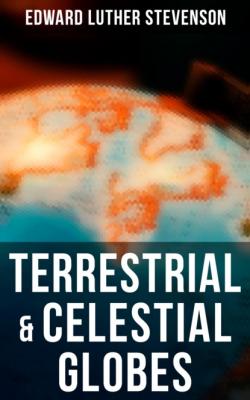Terrestrial & Celestial Globes. Edward Luther Stevenson
Читать онлайн.| Название | Terrestrial & Celestial Globes |
|---|---|
| Автор произведения | Edward Luther Stevenson |
| Жанр | Математика |
| Серия | |
| Издательство | Математика |
| Год выпуска | 0 |
| isbn | 4064066382780 |
Fig. 20. The Constellation Taurus.
In the latter part of the thirteenth century the mathematician, Giovanni Campano, a native of Novara and it appears a particular friend and supporter of Pope Urban IV, won distinction for his scholarly attainments in the field of astronomy.89 In addition to his work, titled, ‘Teorica planetarum,’ wherein he comments on the subject of astronomy and geometry, and makes copious references to the Greek geometrician Euclid, whose works he had translated into Latin, he prepared a treatise which he called ‘Tractatis de sphera solida.’ In the prologue to this work, after noting that the number of astronomical instruments which have been constructed is large, he states that in the main they agree in their representation of the movements of the heavens, adding that as the heavens are spherical, spherical instruments are to be preferred. In his first chapter, after alluding to the astronomical instruments described by Ptolemy, he proceeds to treat of the composition of solid spheres, which he says may be made of metal, or better, of wood. He gives rules for making the same by the use of the lathe, and notes in conclusion it is well to make the sphere hollow in order to lighten the weight. In the following chapters he treats of the inscription of the circles of the sphere, of the construction of the several rings employed in the mounting, such as the horizon and the meridian circles, and gives consideration to the representation of the several constellations on the surface of the ball. In the second part of his treatise he gives instruction as to how to use the instrument in the solution of astronomical problems.
There appears to be only the slightest evidence that Campano was acquainted with the work of Alfonso. His presentation of the subject, in all probability, was altogether independent of a knowledge of the Alfonsian tables. It is interesting to observe that in the day when astrology was in great favor in the universities of Europe, Campano continued to be interested in genuine astronomical science.
Albertus Magnus, in his ‘Liber de coelo et mondo,’90 devotes an entire chapter to a theoretical consideration of gravitation, asserting that the earth is spherical (Spherica sive orbicularis necessario), and proceeds to a demonstration of the theory, in which he practically follows the arguments of Aristotle, that every particle of the earth away from the center is continually in movement seeking that center, the result being the formation of a spherical body. He advances further, as argument in proof of a spherical earth, that the shadow it casts in an eclipse of the moon is circular.
Sacrobosco (John of Holywood or Halifax) (fl. 1230),91 who was active in the first half of the thirteenth century, much of the time as professor of mathematics in the University of Paris, prepared a work bearing the title, ‘Tractatus de sphaera,’ being in part a summary of the ‘Almagest’ of Ptolemy. In this work the theory of a spherical earth is supported in much the same manner as was done by Campano. The ‘Tractatus’ proved to be one of the most important quasi scientific geographical and astronomical textbooks of the later middle ages, being frequently copied, and frequently printed after the invention of that art.92
Further reference might be made to a belief in a spherical earth, as held by Roger Bacon (1214–1294),93 by Thomas Aquinas (1225–1274),94 by Vincent of Beauvais (1190–1264),95 by Dante (1265–1321),96 and still others of the thirteenth, fourteenth, and fifteenth centuries. It should, however, be stated that nowhere in the works of these authors does there appear a reference to the construction of terrestrial globes, and only incidentally the implication that they knew of or approved the construction of celestial globes.
The increasing interest in geography and in astronomy in the closing years of the middle ages led most naturally, in time, to much activity in globe construction, and to this fact attention is directed in the following chapter.
NOTES
70 Beazley’s monumental work, previously cited, considers the geographical knowledge of the Christian middle ages, from the closing years of the Western Roman Empire to the early years of the fifteenth century. See especially Vol. I, chap. vi; Vol. II, chap. vi; Vol. III, chap. vi. Marinelli, G. Die Erdkunde bei den Kirchvätern. Leipzig, 1884; Kretschmer, K. Die physische Erdkunde im christlichen Mittelalter. Wien, 1889; Cosmas Indicopleustes. Christian Topography, tr. by J. M. McCrindle. (In: Hakluyt Society Publications. London, 1897); Günther, S. Die kosmographischen Anschauung des Mittelalters. (In: Deutsch. Rundschau für Geographie und Statistik. Vol. IV, pp. 135 ff.)
71 Zöckler, O. Geschichte der Beziehungen zwischen Theologie und Naturwissenschaft. Gütersloh, 1877. pp. 122 ff.; White, AD A History of the Warfare of Science with Theology in
